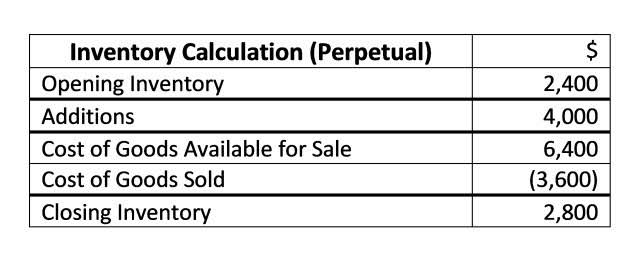What are the monthly expenses for a veterinary clinic?

The average cost for waste disposal in veterinary clinics can range from $200 to $1,500 per month, depending on the clinic’s size and the amount of waste generated. In the ever-evolving landscape of veterinary medicine, continuing education and training costs are essential operational expenses for any veterinary clinic, such as Paws & Claws Care. These costs ensure that veterinary professionals remain updated with the latest advancements in animal healthcare, compliance regulations, and medical practices.

How much should be allocated for marketing expenses each month?
Read on for solutions to 4 common veterinary practice budgeting questions. Some items like joint medications or antibiotics are sold fairly frequently, whereas other items are rarely used but are carried in the vehicle of the ambulatory vet just in case. No vet wants to be driving back to the clinic to get a bag of iv fluids to treat a colic. Another way of looking at it is no client or patient wants the vet to leave the farm to get extra supplies; they rather we treat the animal now. Try reducing the amount you spend on products you sell to 25% of your expenses or less.
- As you are getting started, our vet financial projection template can be a huge help in making this an easy process, but please don’t hesitate to reach out and ask for help.
- Maybe they weren’t circled on the travel sheet or were skipped during computer input.
- Check balances, transfer money, deposit checks, pay bills and more from any device, anytime, and anywhere.
- Since 2012, over 40,000 entrepreneurs from around the world have used ProjectionHub to help create financial projections.
- This information will help you identify opportunities to change spending patterns, develop new revenue, optimize staffing, or make other improvements to increase profitability and stay competitive.
- But you won’t have the headache of managing finances and administrative tasks — instead, you can focus on quality pet care.
- For example, how does your revenue growth at this point in 2020 compare with the same date last year?
Optimizing Your Practice: Top Strategies for Accounting for Veterinarians
Dive deeper into the intricacies of these costs and discover strategies for effective management in our comprehensive guide. Understanding the relationship between facility rent, normal balance utility expenses, and overall financial health is vital for effective veterinary clinic financial management. Monitoring these costs closely can help practices like Paws & Claws Care to remain profitable and provide quality care. It’s no secret that optimizing financial performance is a constant challenge for veterinary practice managers and owners. Are you navigating the complex financial landscape of your veterinary practice and wondering how to enhance its profitability and stability?
- Industry benchmarking shows that today, well-managed equine practices equal or exceed 11% profitability.
- Are new vets recommending the same treatment plans as more experienced vets, and what are the acceptance rates?
- Consider utilizing resources that delve deeper into veterinary clinic budgeting to enhance your financial management strategies.
- Then, use those insights to make informed decisions about where to invest more resources and where you can stop the waste.
- This means that a significant number of individuals in these roles are either leaving or starting a job at any given time.
Why is specialized accounting important for veterinary practices?
Even when you know you’ll need a comprehensive repair in the long run, you may discover that a small, temporary fix will get you by for the time being and save thousands of dollars when money’s tight. Much of your rent, utilities, and general administrative costs are fixed, which means you can’t do much about them. Therefore, to be profitable, you must control payroll and inventory costs. Bloated inventory, excessive staffing, and missed charges take big bites out of your practice’s success. Also keep in mind expenses that happen bimonthly or less frequently, as they will need to be planned for as well.
Facility costs
To answer that question let’s examine what goes into the cost of delivering veterinary care. There are several buckets of expenses we can explore including salaries, cost of medications and supplies, equipment purchases, insurance, vehicle and fuel. How do these diagnostics feed into incremental growth and downstream revenue? When we incorporate patient care-focused recommendations into each preventive care appointment, more clients will veterinary bookkeeping comply.

But with the right CPA and effective accounting strategies, veterinary practices can ensure a secure and profitable future. By implementing these strategies, veterinary clinics can better manage their operational costs and enhance their financial stability, all while providing excellent care to pets. For more detailed insights on how to analyze veterinary practice costs, consider exploring comprehensive resources available online, such as this business plan guide.

Increase revenue
During this time, you can answer any questions, ensure that the consolidators maintain your company ethics, and ease any anxieties your staff may have about the change. Keep in mind that as an owner, you have a lot of leverage and power within the sale. Vet consolidation is hot right now, and your consolidator will likely be willing to adjust the terms to close the sale. If you want to stay on as the veterinarian-owner, work part-time providing veterinary services, or completely hand over your role as a veterinary professional, this is the time to make your wishes known. California, Florida, and Oregon have more lenient policies, only necessitating that a veterinarian-manager be on staff to oversee the practice of veterinary medicine. Meanwhile, states like Georgia, Connecticut, and Massachusetts don’t have any policies about corporate ownership.
It is an objective more easily achieved together with the help of your entire team. Be transparent with your staff about your goals to reduce waste and curb unnecessary costs. Make everyone aware of https://x.com/bookstimeinc the biggest sources of waste and steps they can take to help improve efficiency. If the entire team can take ownership of a shared set of goals, you’ll be much more likely to succeed.


Leave a Reply